 Weird Stuff
Weird Stuff  Weird Stuff
Weird Stuff  Our World
Our World 10 Ways Your Christmas Tree Is More Lit Than You Think
 Movies and TV
Movies and TV The 10 Coolest Stars to Set Sail on The Love Boat
 History
History 10 Things You Didn’t Know About the American National Anthem
 Technology
Technology Top 10 Everyday Tech Buzzwords That Hide a Darker Past
 Humans
Humans 10 Everyday Human Behaviors That Are Actually Survival Instincts
 Animals
Animals 10 Animals That Humiliated and Harmed Historical Leaders
 History
History 10 Most Influential Protests in Modern History
 Creepy
Creepy 10 More Representations of Death from Myth, Legend, and Folktale
 Technology
Technology 10 Scientific Breakthroughs of 2025 That’ll Change Everything
 Weird Stuff
Weird Stuff Ten Bizarre Facts About The Doge Meme
 Our World
Our World 10 Ways Your Christmas Tree Is More Lit Than You Think
 Movies and TV
Movies and TV The 10 Coolest Stars to Set Sail on The Love Boat
Who's Behind Listverse?

Jamie Frater
Head Editor
Jamie founded Listverse due to an insatiable desire to share fascinating, obscure, and bizarre facts. He has been a guest speaker on numerous national radio and television stations and is a five time published author.
More About Us History
History 10 Things You Didn’t Know About the American National Anthem
 Technology
Technology Top 10 Everyday Tech Buzzwords That Hide a Darker Past
 Humans
Humans 10 Everyday Human Behaviors That Are Actually Survival Instincts
 Animals
Animals 10 Animals That Humiliated and Harmed Historical Leaders
 History
History 10 Most Influential Protests in Modern History
 Creepy
Creepy 10 More Representations of Death from Myth, Legend, and Folktale
 Technology
Technology 10 Scientific Breakthroughs of 2025 That’ll Change Everything
10 Unique Burial Sites With Amazing Histories
Over the course of history, people have spent many a different way figuring out how to properly and respectfully remove the dead from the living. Testaments to their work still survive to this day—from the Valley of the Kings to the necropolises in Greece. Although they are strong examples of the interesting ways in which people buried their dead, they are definitely not the only ways.
In addition to the burial sites that everyone knows about, there exist smaller yet still very interesting examples of how people treated the dead. Here are 10 unique burial sites that have their own stories to tell.
10 Plain Of Jars
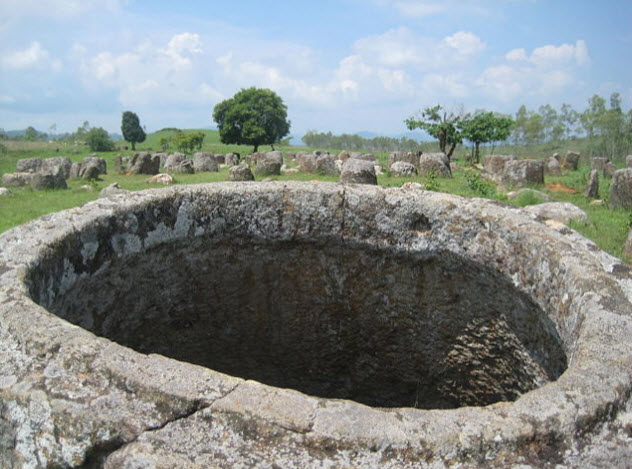
The mysterious Plain of Jars in Laos has been of archaeological interest since its discovery, estimated to have been created around 3,000 years ago. In itself, it is unique, as we covered back in 2011 in our list of unique places around the world. At the time, the exact nature of why the jars existed was unknown, bar a few burials found in the jars. A little more digging, however, has revealed that the burials may not have been a one-off occurrence.
A discovery in April 2016 revealed evidence that the pots were used in a specific burial practice, meaning the burials found earlier were related to the purpose of the Plain of Jars and weren’t simply an isolated occurrence. These included the discoveries of a bone pit with a limestone block placed on top, bones found in special ceremonial vessels for burial, and a traditional grave.
This leads archaeologists to confirm that the Plain of Jars was used for preparation and burial of the deceased. Speculation is that the jars were used to decompose the bodies until they were bones, at which point they could be buried. As it stands, however, it’s still only speculation.
Until more burial preparations can be unearthed, it’s still early days to confirm or deny the pots’ exact usage. One thing is sure, though—the Plain of Jars was designed to be the preparation spot for the deceased.
9 Oise-Aisne American Cemetery
Plot E
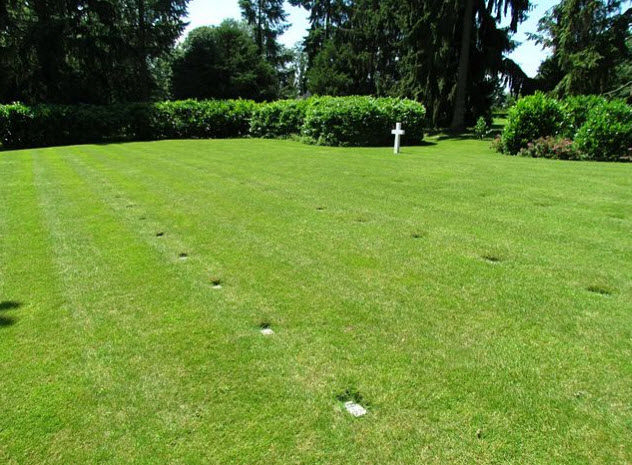
Oise-Aisne American Cemetery Plots A–D are standard enough—they’re used to represent 6,000 American soldiers who died in World War I fighting in France. They’re well maintained, easy to access, and a timeless honor for those who have passed.
To those who visit the cemetery, it’s easy to believe that plots A–D are the only plots the cemetery holds. But there is another plot that’s surrounded with overgrown shrubbery and not mentioned on the cemetery’s website or map. The only way to access it is to walk through the cemetery superintendent’s office—and even then, the door to it is usually locked.
This is the fate of Plot E, a cemetery with 94 bodies of people executed for crimes committed around World War II, including rape, murder, and desertion. Each “gravestone” is a marker the shape and size of an index card, which is embedded in the grass with just a number to identify it.
The people buried in Plot E are positioned so that their backs are turned away from the main cemetery site. No US flag is allowed to fly over Plot E, either. Due to this, Plot E has been labeled an “anti-memorial,” which acts as a stark contrast to the honored dead in the other four plots.
8 Sutton Hoo
Mound One
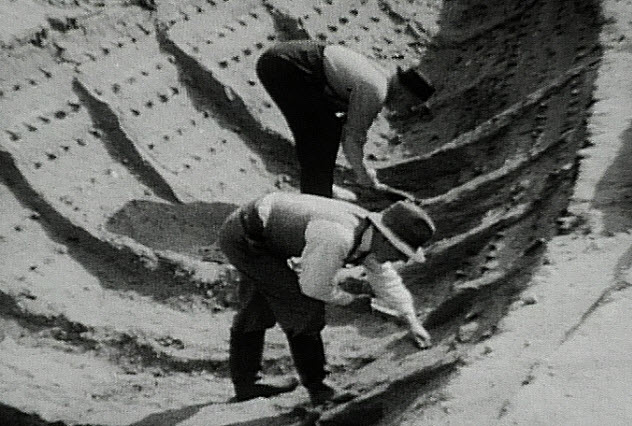
At first glance, Sutton Hoo is nothing to write home about. The burial sites for Sutton Hoo appear as 18 bumps in the earth in the English countryside near Woodbridge. These mounts, however, are named Britain’s very own Valley of the Kings as they’re seventh century AD royal burial mounds.
Over time, especially in the Tudor times, these mounds were broken into and the treasures within looted, but two escaped unharmed—the first and the 18th mounds. Although each mound has its own interesting history, it’s very lucky that Mound One survived the looting as it contains the richest burial in all of Europe, with historians believing that it belonged to one King Raedwald.
The burial chamber at the center of the mound contained Byzantine silverware, jewelry, a set for feasting, a purse containing 37 gold coins, three coin-based blanks to round up the coin total to 40, two gold ingots, and an iron helmet. The iron helmet became an iconic representation of Sutton Hoo, the unofficial “face” of the burial site. These treasures were donated to the British Museum.
The stunning part is, those aren’t all the tricks that King Raedwald kept under his posthumous sleeve. While no longer present, evidence points toward the fact that he was also buried with a 30-meter-long (90 ft) boat. Of course, after such a long time, the boat has been eroded by the acidic soil. But the boat left a “fingerprint” in the sand of the burial mound, so we know that it was once there.
7 Le Cimetiere Des Chiens
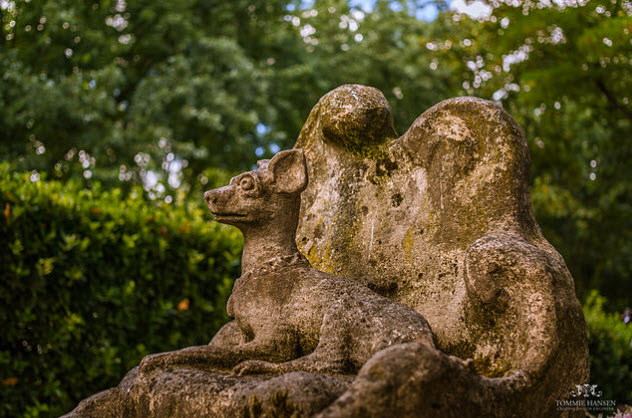
Le Cimetiere des Chiens is a cemetery found in Asnieres-sur-Seine, northwest of Paris. The name of this cemetery translates to “the cemetery of dogs,” and that’s just what it is—a place of burial for some of man’s departed best friends. Since its opening in 1899, the cemetery has become Le Cimetiere des Chiens et Autres Animaux Domestiques (“the cemetery of dogs and other pets”), expanding the range to other animals. This means that there are lots of cats buried there now as well as a few horses. You’ll even find a few exotic pets, such as a monkey.
Although the graveyard has been around for over a century, the historical stories of the cemetery come from the graves themselves. As it was opened before both of the World Wars, the graveyard lends itself naturally to being the resting place of beloved service dogs that lost their lives during wartime.
One grave is for Barry, who served as a trench dog in World War I. He is depicted on his gravestone as a dog with a child being carried on his back. The inscription reads: “He saved the lives of 40 people. He was killed by the 41st.”
According to the graveyard staff, the story behind Barry wasn’t that the 41st person betrayed him. Barry carried 40 of the wounded from a battlefield and died of exhaustion after delivering the 41st—a child—to safety.
The grave of another World War I service dog is marked with the initials “L.V.” and features a poem which starts with the following:
Here lies Dick, faithful companion in the trenches
Who was always my only friend
He lived a model life
And his leaving plunges me into sadness.
6 Savannah International Airport
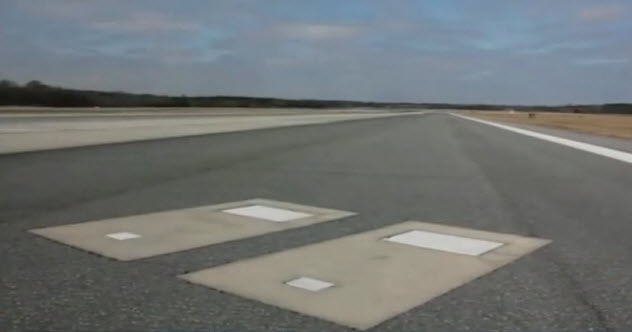
Richard and Catherine Dotson’s 17th-century graves are a curious case. Although their burials were nothing too grand, they didn’t become truly unique until 1980, long after they died.
The land in Savannah in which Richard and Catherine were buried was originally granted to the couple by a king. The Dotson family kept a farm and buried their dead there. The land was relatively undisturbed until World War II when the US Army Corps wanted to take over some of the Dotson land to build runways for bombers and fighter craft.
The modern Dotson family allowed the airstrip to be built with two conditions: The army had to pay to move the family graveyard into Bonaventure Cemetery, and Richard and Catherine’s graves had to stay on the land they were granted by royalty. The family’s demands were met, and everyone except the original couple was moved.
The airport grew into a commercial and military airport, and the original couple was left undisturbed until 1980, when the airport wanted to expand Runway 10, where the couples’ graves were in the way. Permission to move them was not granted, so the airport did the next best thing—they set the graves within the runway itself as a permanent addition to the airport.
Since then, pilots landing at the runway have asked air traffic control if they really just passed a pair of graves on the runway. Some pilots even ask to use the runway with the graves so they can see them.
5 Qafzeh Cave
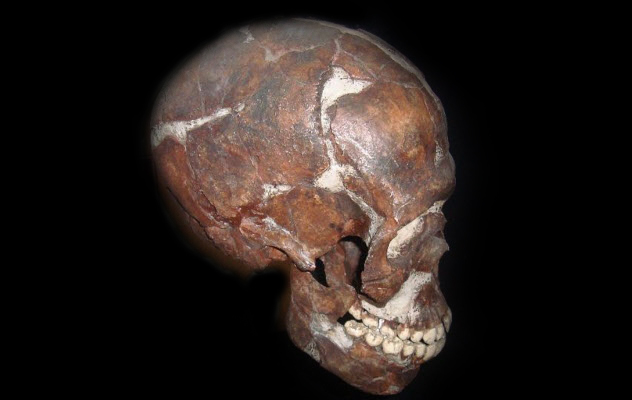
Discovered within a cave in Israel were the skeletons of 15 people, decorated with ocher and ocher-stained tools which appeared to be a part of a “sending off” process for the departed. Such a discovery usually wouldn’t be too amazing. However, the real story behind this burial wasn’t so much how the people were buried but when.
The ocher presence in the caves was more than just decoration. It was a example of when people communicated thoughts through specific mediums and items, which was called “symbolic thought.” The 71 pieces of ocher were only found around the bones, representing the symbolism of a burial ritual.
Although we have symbolism even today, symbolic thought is important because it was being used even before complicated language and mathematics were invented. It acted as a stepping-stone of human evolution to the communication methods we have today.
So if the ocher was being used before people were properly talking to one another, how old are these skeletons? Archaeologists believe that the people in Qafzeh cave died approximately 100,000 years ago, making Qafzeh cave the earliest example of a deliberate burial process for the dead. It is also proof that the concept of putting the dead to rest existed in Middle Paleolithic times.
4 Okunoin
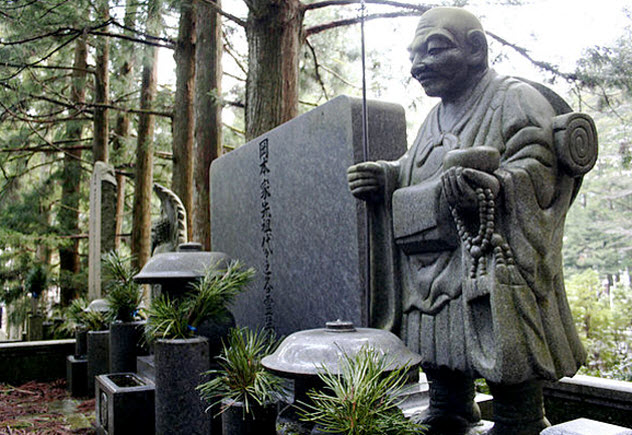
Okunoin Cemetery, situated at Mount Koya in Japan, is a special graveyard in its own right, given how it’s the biggest one in the country. If you’re expecting simply rows and rows of traditional graves, however, you’ll be pleasantly surprised if you pay a visit. Some of the gravestones are tailored to represent the professions of the people who died, taking the form of spaceships, cups, and even an insect grave. This last one was set up by an insecticide company with a dedication to all the tiny lives lost to their product.
There is also a statue of the Jizo Bodhisattva, at which people throw water to pray for the newly departed. People are also challenged to lift the Miroku Stone (which is in a small cage) with one hand. The purer the heart, the lighter the stone will be.
While obviously an ancient graveyard, that’s not the only historical story it has tucked away. One of its strongest ties with the past is the same reason why it is the most sacred spot in Japan: The sixth-century mausoleum of Kobo Daishi acts as the resting place of the founder of Shingon Buddhism.
We use the term “resting place” very literally here as it’s believed that Kobo Daishi never actually died. Within the mausoleum, which is forbidden for mortals to enter, Kobo Daishi waits in peace for the coming of the Buddha of the Future. In support of Kobo Daishi’s efforts, people leave food outside the mausoleum.
3 Chambered Cairns
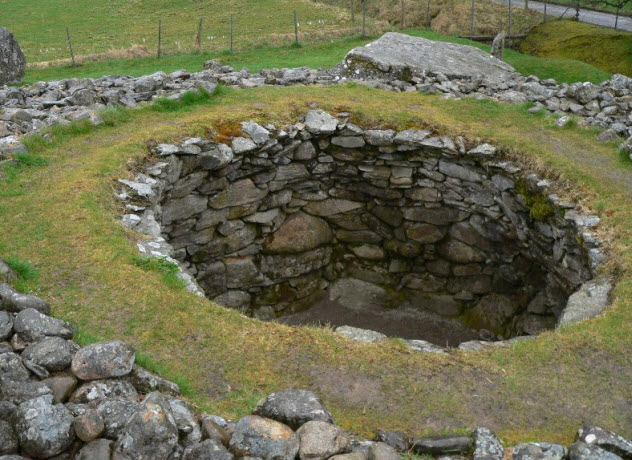
When discussing the idea of tombs, it’s easy to imagine something along the lines of locking the dead away in a structure, never to be disturbed again. There are a few sites, however, where the place of burial also serves a religious or ritualistic purpose. These days, we can look to various cathedrals around the world that both house the dead and support the living in equal measure. This practice, however, was used back in Neolithic times with chambered cairns.
You can find chambered cairns all over the UK, but you’ll see the largest number of them around Orkney, Scotland. As far as appearances go, they’re structured similar to a bunker or a trench, albeit their purpose wasn’t to protect the living. Their designs fit into all sorts of classifications and have all kinds of names, but the two that are most prevalent are the Orkney-Cromarty and the Maeshowe variations.
Orkney-Cromarty cairns featured a long corridor divided into “stalls” on either side with upright stone slabs along the walls, which act as crude partitions. The space between each slab acts as a stall, within which a bench was placed with the dead resting on top.
Maeshowe didn’t use stalls, instead using cells within the walls, which were laid out in one large room. Maeshowe variants were also a lot bigger, using larger stones in their construction, and were heralded as the Neolithic version of a cathedral.
It’s believed that the cairns were visited regularly by the community, as if the dead were just as much a part of the group as the living. There is also evidence that rituals took place that may have been attempts to talk to the spirits.
2 Greek Revenant Burials
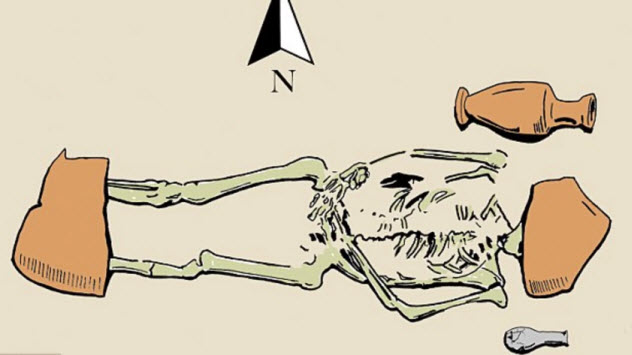
In a Greek necropolis in Sicily, 3,000 skeletons of the long-lost buried were found within. While a great finding by itself, two of the 3,000 burials puzzled archaeologists when they investigated back in the 1980s. When documenting each of the burials, the two were discovered to be “pinned down” using heavy rocks and stones. The rocks were large and covered the victim’s feet and head. While strange, no more research took place on why these bodies were buried in such a way until recently.
It’s believed that the stones are meant to prevent the corpses from returning as revenants—animated dead bodies which harm the living. The stones on the feet stopped the body from rising again while the stone on the head prevented the revenant from seeing. One of the two skeletons showed evidence of arrested growth in the teeth, implying some sort of malnutrition or illness. The other was a child who showed no signs of illness in life yet was still weighed down.
This makes sense when you realize that strangers, illegitimate children, and those born with illnesses or abnormalities were believed to be likely candidates to rise from the dead as a revenant. As such, both bodies must have met the criteria and were pinned down to keep them from harming the living.
1 Small River Cemetery No. 5
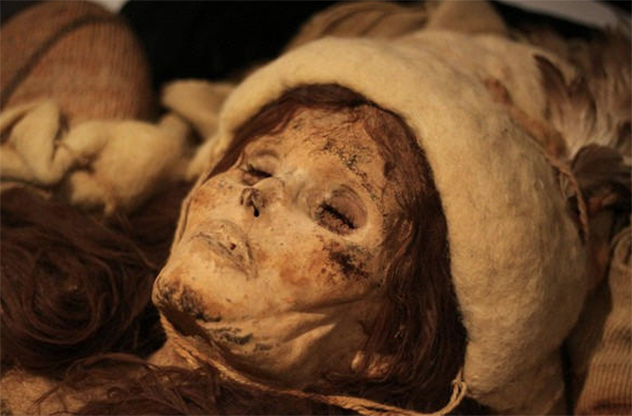
Within the hot expanses of the desert of Xinjiang, China, archaeologists have discovered a burial site for approximately 200 people that was constructed around 4,000 years ago. Fortunately, given the heat and the dry air of the desert, the corpses are very well-preserved, down to the very clothes they were buried in. What makes them interesting is that, due to the lack of decay, it’s easy to identify the origin of the people buried here—and they’re not Chinese.
They appear to be Europeans, Siberians, and East and South Asians who were buried under boats. Within each boat were burial trinkets, such as masks and herbs. Each burial spot was marked with a 4-meter-tall (13 ft) pole. Each pole acted as a sex symbol of the opposing gender of the person buried under it, meaning they were representing the inhabitant’s desire for sexual pleasure. Their names and true origins remain unknown, but there are some people who aren’t archaeologists who are very keen to know the answer.
The region of Xinjiang has undergone some political turmoil between the Turkish-speaking Uighurs and settlers from Han. Both want to stake their claim to the lands, even resorting to rioting in Urumqi, the capital of Xinjiang. Upon discovery of these bodies, the Uighurs were keen to use them as an example that they were there first, despite the fact that the Uighurs settled in China in the 10th century, a good 3,000 years after the burials occurred.
S.E. Batt is a freelance writer and author. He enjoys a good keyboard, cats, and tea, even though the three of them never blend well together. You can follow his antics over at @Simon_Batt or his fiction website at www.sebatt.com.






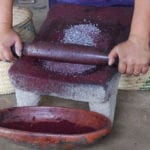
![10 Abandoned Amusement Parks With Horrific Histories [Disturbing] 10 Abandoned Amusement Parks With Horrific Histories [Disturbing]](https://listverse.com/wp-content/uploads/2019/09/gulliver-150x150.jpeg)
